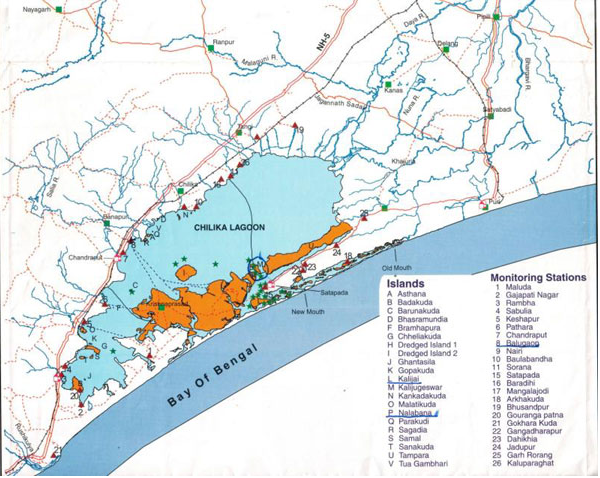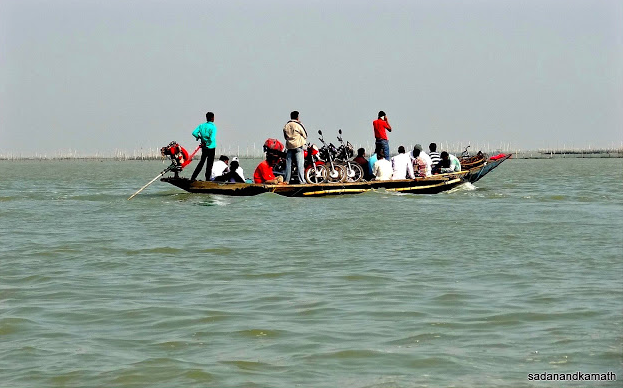The outline of this International Development course (INDEV 101), allowed the participating students to explore the various theoretical and practical approaches to critical development issues that different countries face. This course consisted of a divide between informal lectures and case studies. Often, these case studies were introduced to the class by guest speakers or by educational documentaries.
Essentially, the presentation of these case studies demonstrated the complexity of development challenges. This further illustrated how the proposed solutions may not be adaptable and applicable in all situations. Thus, this forced us, the International Development students to think critically about the varying factors in project success or failure rates. This also, further challenged us to reflect and contrast our prior Western embedded beliefs, the varying approaches to international issues, and the ethics of development practices. The Chilika case was the first case study that was presented to us in class which provided an introductory reference as to how to critically analyze real-world situations. Later, it was presented as the last case study that we looked at in order to refer back to our initial reference point, and compare and contrast our initial analysis with the application of our gained knowledge after 12 weeks of study.

Chilika Lagoon is known for its biodiversity and contribution to the livelihood of the surrounding fishing communities. For hundreds of years, the lagoon has sustained roughly 140 villages.
However, due to the introduction of shrimp aquaculture in the 1980s, this resulted in a decrease in the production of natural fish and income for households, increased poverty, and environmental degradation.
Another impact was the introduction of an artificial sea mouth. The change of sea mouth brought many adverse effects to the lagoon including a disturbance of the salinity balance, changes of water inflow and outflow, sand infestation and invasion of saltwater species. As a result, there were adverse impacts on the natural and social systems in the communities surrounding the lagoon.
The irreversible impacts included: a decrease in catch leading to approximately one-third of fishers displaced to other occupations, a decrease in the local women's social status due to lower quality fish, biodiversity decrease, and the prevalence of food insecurity.

From the case of Chilika, we were able to examine how local issues had the potential of facing influence by global level drivers such as the international market price for shrimp. This exemplifies a two way process between the interrelationship of local issues and global issues. In other words, poverty and hunger at a local level can accumulate and intensify in several communities and potentially create a national issue – on an even larger scale, become a global problem.
Due to the aquaculture development for tiger prawn and governmental hydrological intervention, approximately 400,000 people were marginalized. Similarly, these changes also had adverse impacts on India's rural population. This led to an increase in food insecurity and contributed to an immense amount of the population living within the poverty line.
These issues thus became a barrier in preventing India from achieving the International development targets. Such as, the millennium development goals, which includes eradicating extreme poverty, hunger, and ensuring environmental sustainability. Furthermore, from the growing resentment towards the federal government within the local communities, it led them to their own self-determination and empowerment which gave rise to a social and environmental justice movement. These local communities began to advocate for environmental justice and formed social movements in response to the injustices they faced. Due to the altering agricultural landscape, Chilika experienced a plethora of wetland habitat loss, biodiversity loss, and the loss of IUCN red-listed species.
Despite the government’s assertion that the aquaculture farming in the Chilika Lagoon is aiding the Indian people and its economy, in effect it is occurring at the expense of 400,000 people. Local fishing communities and its inhabitants are facing social marginalization and the environment is facing depletion. The execution of aquaculture is illustrating the harmful effects of an unsustainable practice that could contribute to further environmental degradation and social injustice. Although the government continues to publish documentation regarding the success of aquaculture, when Prateep was asked about the next steps in combatting this complex development, he himself did not have a precise answer. Perhaps, the next steps involve increasing advocacy not only in India, but from various stakeholders. These stakeholders can then outline the detrimental effects that Chilika can impose on India and the world. The case of Chilika can empower people from all over the world to campaign for the injustices these local fishing communities have faced and to prevent further ecological damage. The decline of a unique biodiversity hotspot such as Chilika can sequel a series of irreversible impacts on its marine and land species, the lives of its inhabitants, and the state of the lagoon. Unfortunately, not many people are aware of the predicaments of Chilika. Through the use of Prateep’s fieldwork, this can further implore International Development students, other colleagues, and additional researchers to facilitate supplementary investigation on other issues throughout the world that can hinder development.
References and Further Information:
Chilika Lake. (2015). Retrieved April 08, 2016, from http://www.coastaltourism.in/chilika-lake/
D. (2014). Welcome to Chilika Lagoon. Retrieved April 08, 2016, from http://www.chilika.com/home.php
International Development course descriptions. (2013). Retrieved April 08, 2016, from https://uwaterloo.ca/school-environment-enterprise-development/current-undergraduate-students/international-development/international-development-course-descriptions
Kamath, S. (2013, August 4). WANDERLUST. Retrieved April 08, 2016, from http://sadanandsafar.blogspot.ca/2013/08/a-day-in-chilika-lake-december-2012.html
Nayak, Prateep Kumar and Berkes, Fikret(2010) 'Whose marginalisation? Politics around environmental injustices in India's Chilika lagoon', Local Environment, 15: 6, 553 — 567
Nayak, P. K., & Berkes, F. (2011). Commonisation and decommonisation. Understanding the Processes of Change in the Chilika Lagoon, India, 9(2), 132-145. doi:10.4103/0972-4923.83723
Nayak, P. K. 2014. The Chilika Lagoon social-ecological system: an historical analysis. Ecology and Society 19(1): 1. http://dx.doi.org/10.5751/ES-05978-190101
The IUCN Red List of Threatened Species. (2015, April). Retrieved April 08, 2016, from http://www.iucnredlist.org/
U. (2006). UN Millennium Project | About the MDGs. Retrieved April 08, 2016, from http://www.unmillenniumproject.org/goals/
Contact information
Ashleigh Kong, Nathan Lee, Tristan MacLean, Aileen Li, Jessica Lockye, Olivia Trudeau,